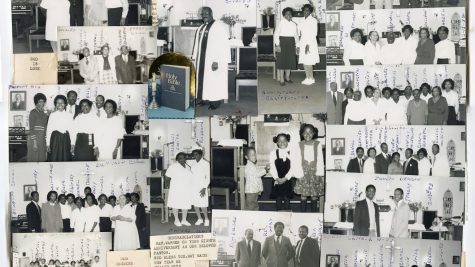The Death of Print Journalism
Newsrooms have experienced traumatizing cuts. The New York Times, heralded as country’s most esteemed and lucrative paper, cut 100 newsroom positions last year and cut salaries for the rest of the year by 5 percent. They even have sold their Manhattan headquarters for $225 million to pay debt as print advertising revenue declines.
Changing with the times, the paper’s Web content has reached all new heights. Last October, the newyorktimes.com topped 20 million users, while the hard copy sold a mere 1.4 million copies. Revenue cutbacks coupled with the economic meltdown have led to decreased circulation for not just the august New York times, but for papers nationwide.
Yet more people are reading than ever before. Readers go online to read the morning news and supplement their Times content with their favorite blogs, in addition to checking RSS aggregation and by-the-minute Twitter updates. (As of last December, Twitter brags of 4.43 million users and grew 752% in the year 2008.)
But print journalism is changing beyond the format. The way news is presented stylistically is undergoing a makeover, as most hard news stories read more like feature pieces than the straightforward cut-and-dry hard news. “It seems to be what the reader is requesting and what we’ve become in our news, television, and radio,” said SOC professor Menke-Fish. “People seem to like it delivered in a different style than hard news.” Hard news writing has an inverted-pyramid format, where news is presented in the order of importance, with the most important news first. But this style, in light of new forms of Web writing, feels stodgy and antiquated. Stories today have less words, more nuance, and depend on anecdotal leads to pull readers in.
And indeed, newspaper jobs are disappearing as fast as you update your Twitter account. Accordingly, colleges and universities have been preparing for the changing industry. At AU, new programs are burgeoning with an emphasis on new social media forms. For instance, journalism professor Charles Lewis has launched the Investigative Reporting Workshop at SOC to study and incubate new business models for serious journalism, according to Dean Larry Kirkman. In the current issue of the Columbia Journalism Review, Lewis looks back on the evolution of journalism from the year 2014 and maps the emergence of sustainable non-profit news organizations with a social mission that will provide the investigative reporting we need for a strong democracy. He notes that ProPublica, a 29-strong web-based team of investigative journalists with an annual philanthropic budget of $10m, has created a non-profit newsroom in order to preserve investigative journalism in the public interest. The ProPublica Web site claims that this non-profit model of journalism will help uphold democratic institutions. Maryland Senator Benjamin Cardin introduced legislation in March that would allow newspapers to organize as nonprofits, kind of like NPR or PBS. In a speech on the Senate floor, Cardin remarked, “Newspaper reporters forge relationships with people: they build a network which creates avenues to information. These relationships and the information that follows are essential to a free democratic society.” And as Reclaim The Media‘s David Westphal asked, “But if Sam Zell [a billionaire who is the head of media conglomerate Tribune Company] can figure out how to run a billion-dollar company and pay no taxes, can’t someone figure out a way to do that with a non-profit?”
Journalism students worry about post-graduation job prospects — and justifiably so. According to the Project for Excellence in Journalism and Rick Edmonds of the Poynter Institute, the total job loss between 2001 and 2009 will reach 10,000, which was 20% of news industry employees in 2001. But Dean Kirkman has confidence that the AU curriculum will equip students with a marketable skill set. “Our students are getting jobs because we are training them not only to be excellent writers and reporters, which is still what employers value most, but also because they leave here with the essential digital skills to work across media platforms and in 2.0 social media.” So perhaps getting a job in print journalism these days means something different; perhaps online is the new print. Whatever the case, news is here to stay.











